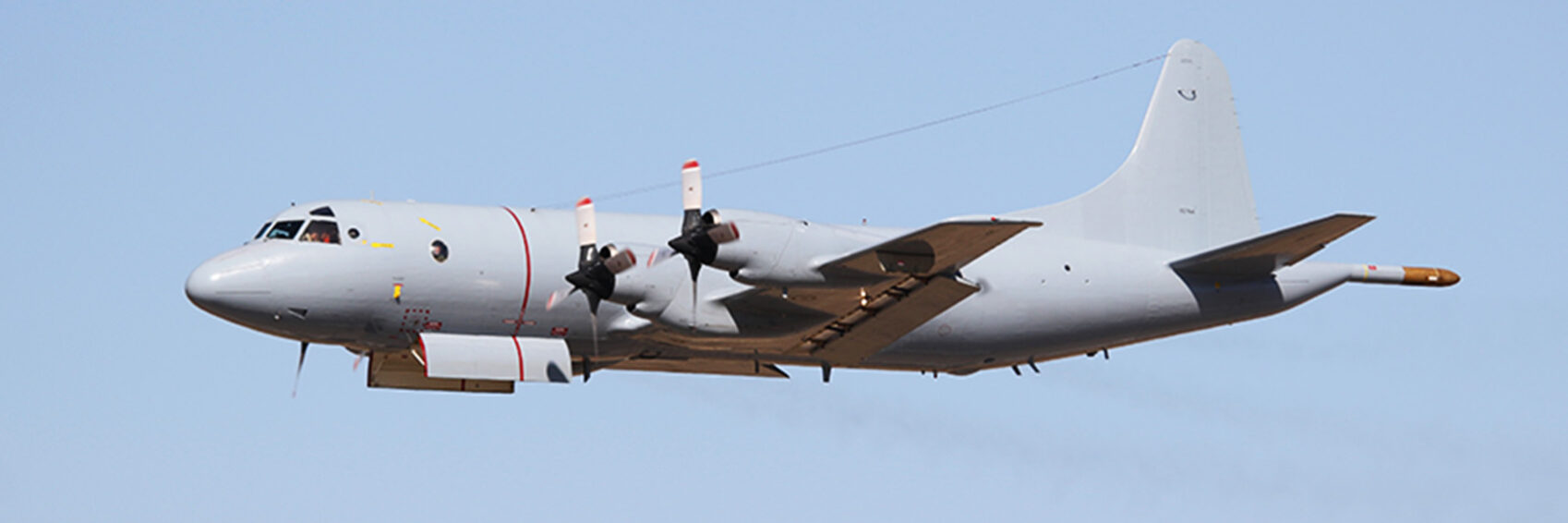The P-3 Orion is a long-range, land-based anti-submarine warfare aircraft that is currently in use by U.S. and foreign military forces. At AllClear, we offer common repairs for the aircraft, including hydraulics, fuels, brakes, nose landing gear, and TAVCO Bottles.
Brief Background
The P-3 Orion can be traced back to the 1960s, when it was initially developed for the U.S. Navy. Its original design was inspired by Lockheed’s 188 Electra, particularly in the front fuselage. Despite boasting a range of 5,570miles and a maximum speed of up to 405mph, the Orion was initially meant to fly at slow speeds and low altitudes for long periods of time.
Since then, the P-3 Orion has gone through a number of upgrades designed to improve its threat detection capabilities. It still has a lot in common with the Electra, but the length of the fuselage has been shortened by 2.13m, leading to a considerable weight reduction. The front fuselage has also been fitted with a weapons bay. It is distinguishable by its unique tail stinger used for the magnetic anomaly detection of submarines. Up to 757 P-3 Orion aircrafts have been built.
The modern P-3 Orion Update III comes with Magnetic Anomaly Detection tools, high-grade submarine detection sensors, and the ability to carry a variety of weapons on wing pylons and on the inside. It has been largely upgraded with better acoustic sensors and modern technology. Most of the equipment onboard is still designed for its original mission – Anti-submarine warfare (ASW). This means that it comes with detection systems such as sonobuoy receivers and radar.
Usage over the years
The P-3 Orion is still being used by numerous air forces and navies around the world, primarily for anti-submarine warfare, anti-surface warfare, reconnaissance, and maritime patrol.
In the past, most of the data collected by the sensors on the P-3 Orion was manually analyzed and processed. This procedure was time consuming and hindered fast tactical decision-making. When computers were introduced, all subsequent operational systems were processed digitally through a single computer.
During the initial production, three important changes were made:
- The Orion was adjusted for mine-laying operations.
- An APU (Auxiliary Power Unit) was introduced to the P-3’s basic equipment, meaning that the aircraft would no longer be dependent on ground equipment. One significant improvement was the addition of the AQA-3 or AQA-4 paper recorders (aka Deltic), and later the AQA-5. While the original P-3’s systems could only process four buoys, this system had the ability to handle up to 8 sonobuoys.
- The newer AQA-5 systems provided remarkable speeds. Additional improvements included an enhanced Electronic Support Measures platform for receiving and analyzing radio and radar signals, an acoustic tape recorder, and navigational aids. The remaining P-3 aircraft in the U.S. Navy will soon be replaced by the Boeing P-8 Poseidon.
P-3 Orion Upgrades and Modernization
AllClear is a Lockheed Martin-authorized P-3 distributor. By collaborating with our P-3 OEM partners, AllClear stocks and distributes P-3 Orion parts with a fast turnaround time. Our agreement allows us to offer support for all major systems on the plane with unmatched performance, quality, and parts availability.
P-3 Orion Repair & Manufacturing Services
AllClear is a Lockheed Martin licensee authorized to manufacture structures and soft goods. AllClear Repair Services is an FAA-approved repair station that specializes in the overhaul and complete repair of P-3 Orion parts. We also work with a strategic group of repair, maintenance, and overhaul partners worldwide to offer our P-3 Orion customers various services wherever they are needed. These services include:
-
- TAVCO Bottles
- Nose Landing Gear
- Brakes
- Fuel
- Hydraulics
- Electro-mechanical
- Repair management
- Fabrication and manufacture
- Engineering design
- Tooling development

